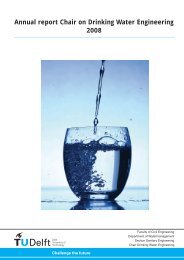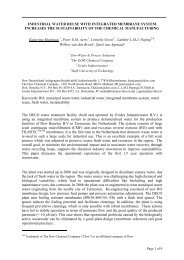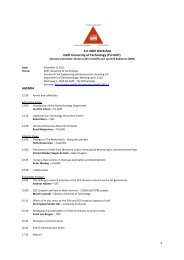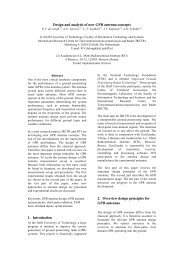Lecture Notes CT 4860 Structural Pavement Design Design of ...
Lecture Notes CT 4860 Structural Pavement Design Design of ...
Lecture Notes CT 4860 Structural Pavement Design Design of ...
Create successful ePaper yourself
Turn your PDF publications into a flip-book with our unique Google optimized e-Paper software.
1. Introduction<br />
These lecture notes are dealing with the design <strong>of</strong> flexible pavements. Before we start with start<br />
with a discussion on stress and strain analyses in such pavements, we better ask ourselves “what<br />
is a flexible pavement” or “what do we define as being a flexible pavement”. In these notes all<br />
pavements which are not considered to be a cement concrete pavement or a concrete block<br />
(small element) pavement are considered to be a flexible pavement. This implies that also<br />
pavements with a relatively stiff cement treated subbase or base are classified as a flexible<br />
pavement. Some examples <strong>of</strong> what is considered to be a flexible pavement are given in figure 1.<br />
I<br />
50 mm asphalt<br />
concrete top<br />
layer; 150 mm<br />
unbound base;<br />
150 mm unbound<br />
subbase;<br />
subgrade<br />
SOUTH<br />
AFRICA<br />
II<br />
50 mm asphalt<br />
concrete top<br />
layer; 150 mm<br />
unbound<br />
base; 150 mm<br />
cement treated<br />
subbase;<br />
subgrade<br />
SOUTH<br />
AFRICA<br />
III<br />
50 mm porous<br />
asphalt concrete;<br />
200 mm<br />
asphalt concrete;<br />
300 mm<br />
unbound base <strong>of</strong><br />
recycled material;<br />
subgrade<br />
NETHERLANDS<br />
Figure 1: Different types <strong>of</strong> flexible pavement structures.<br />
IV<br />
200 mm polymer<br />
modified asphalt<br />
concrete; 600 mm<br />
lean concrete<br />
base; subgrade<br />
SCHIPHOL<br />
AIRPORT<br />
AMSTERDAM<br />
In the South African structures, the bearing capacity <strong>of</strong> the pavement is provided by the unbound<br />
base and subbase (structure I) or by the unbound base and cement treated subbase (structure<br />
II). The asphalt top layer provides a smooth riding surface and provides skid resistance. These<br />
structures have been successfully used in South Africa for moderately (structure I) and heavily<br />
loaded (structure II) roads. The “secrets” <strong>of</strong> the success <strong>of</strong> these pavements are the high quality,<br />
4











